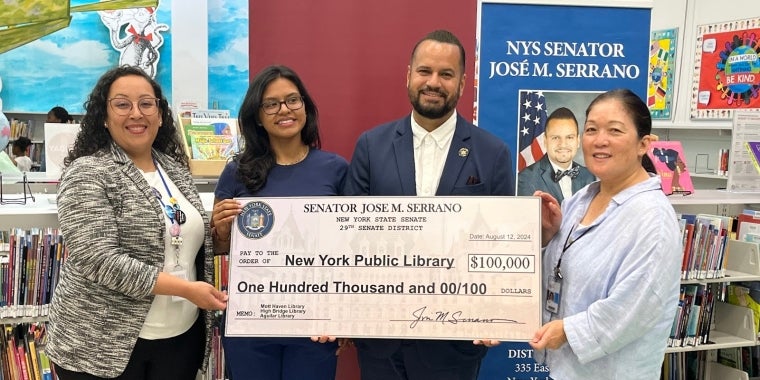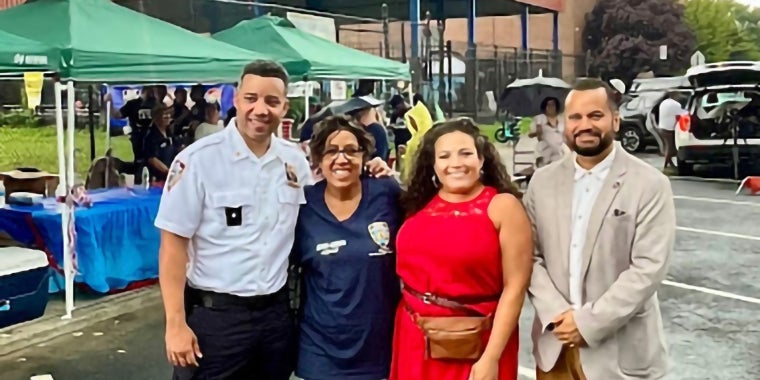
Let's Not Gamble with Our Children's Future
José M. Serrano
November 4, 2009
I’m not a gambling man. Yet if I had a dime for every time I mentioned the benefits of arts education, I’d wager that I would have just about enough to close the $3 billion budget gap facing New York State. Well, maybe not quite that much, but judging from my experience this week alone, I think it would be a hefty sum.
I just returned from a trip to Syracuse, New York, where I was thrilled to attend and host various events related to the Arts, Culture, and Tourism. Among these, I addressed a conference on arts education titled Creativity and Other Boundless Resources for Recession-Era Education. It seemed appropriate that I attend such a conference in the month of October, after having introduced a resolution- which passed the State Senate unanimously- making October arts education month in the state of New York. I was joined by my friend and colleague, Senator David Valesky, who represents parts of Syracuse, and is, like me, a huge supporter of arts education.
After Senator Valesky introduced me to the teachers and advocates in attendance, I spoke about my belief that the arts have a transformative effect on communities. Yet we, as a state, are sorely missing the mark when it comes to arts education, thereby removing the tools needed to give folks the opportunity to better themselves and their neighborhood. Although it was an honor to address those who are in the trenches daily fighting for this very important cause, I quickly realized that at such an event, I was preaching to the choir. What is really needed is a better method to inspire the unconverted.
It is imperative that we do not make the mistake of believing that the only critical academic courses are the ones directly linked to statewide standardized tests. Studies have proved, time and time again that children who are taught music and art are far more successful in courses like reading and math. If you don't believe me, just take a few minutes to look at this comprehensive study recently completed by the Center for Arts Education.
The evidence is overwhelming- arts instruction increases graduation rates and helps to develop a number of critical skills, such as self-discipline, creativity, teamwork, problem solving- the list is endless.
Heartbreakingly, evidence also exists that tells us that compliance for arts education isn't anywhere near where it should be- at least in New York City. The Department of Education reports that only 8 percent of elementary schools were in a position to meet the minimum state requirements establishing that every school offer all four art forms in each grade.
That is why I sponsored a bill (S6105), which passed the Senate, that would create an arts advisory panel for the NYC Department of Education. The panel will advise and make recommendations for how NYC can move arts education forward by improving and enriching the curriculum. This was a major victory for arts education advocates, but an even bigger win for the school children, who under this revised version of NYC school governance will have increased arts in their classrooms.
While this panel will be a big step forward for NYC, we actually have no idea how bad compliance is on the state level. That is why I introduced S5878, a bill requiring the State Commissioner of Education to conduct an audit on arts education, so we can get a clear idea of how poor compliance is throughout the entire state, and then begin to develop real solutions.
I will continue to introduce legislation and speak about the importance of arts education. However the only way to galvanize significant support for arts education is by encouraging advocates to rally around the existing data – such as the above mentioned Center for Arts Education report. Time is of the essence – when we miss the opportunity to inspire our youth through arts and music, sadly, that chance is lost forever. A small investment now in arts education will reap economic and social benefits for generations to come. Can our society truly move forward without arts in the classroom? I’m not willing to take that gamble.
Share this Article or Press Release
Newsroom
Go to NewsroomSenator Serrano Co-Sponsors a Back-to-School Backpack Giveaway
September 3, 2024

Senator Serrano Celebrates Bear Mountain Pool's Centennial
August 12, 2024

